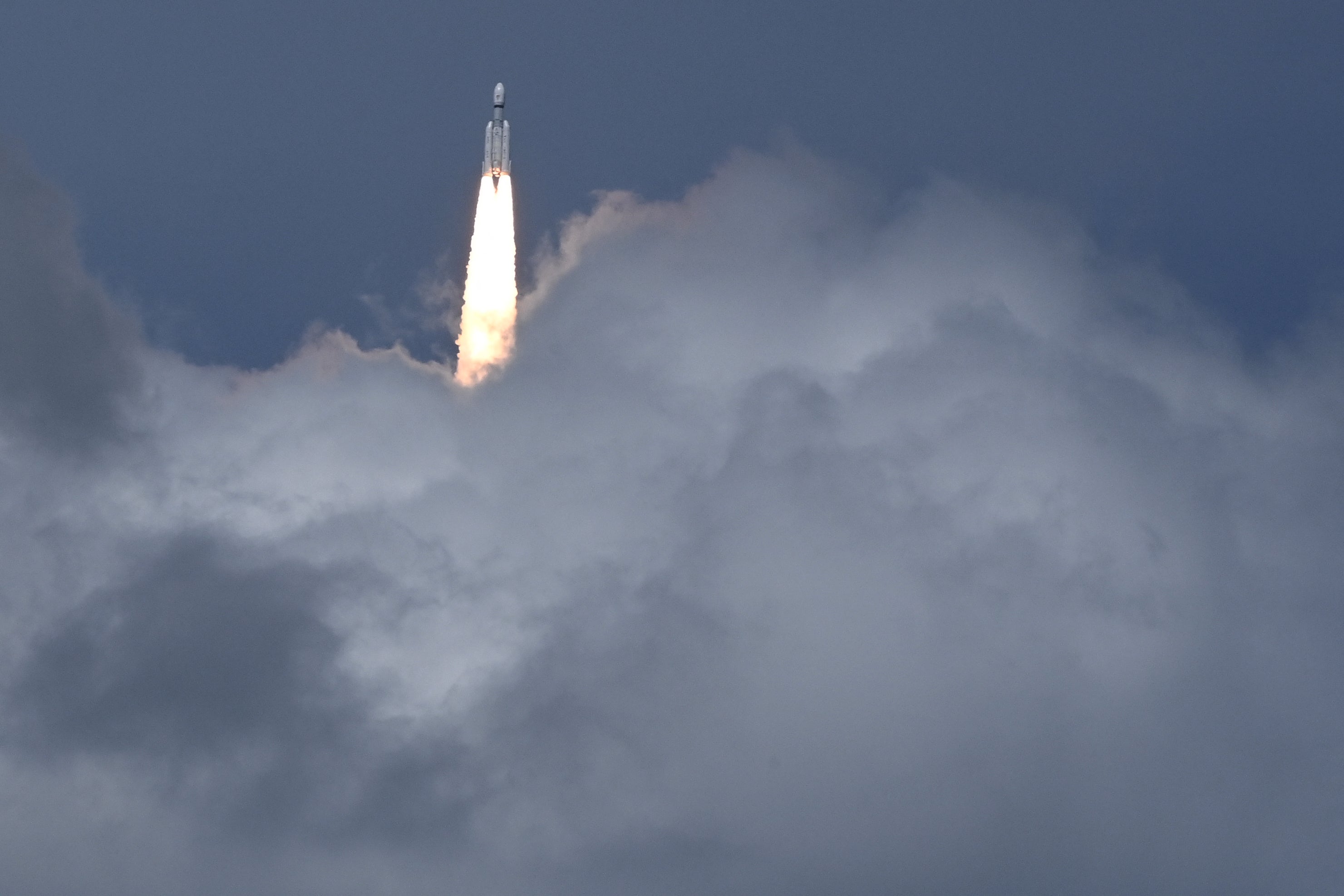Chandrayaan-3 achieves historic milestone, enters moon’s orbit with aim to explore south pole
Chandrayaan-3 is expected to soft-land on lunar surface around 23 August

Indian spacecraft Chandrayaan-3, on a follow-up mission to the Moon’s south pole, has successfully entered lunar orbit, the country’s space agency said on Saturday.
“Today, the Chandrayaan-3 mission achieved a crucial milestone with the successful completion of the Lunar Orbit Insertion (LOI). The insertion was carried out by retro-burning at the Perilune for 1835 seconds, starting at 19.12hrs IST. The manoeuvre resulted in an orbit of 164 km x 18075 km, as intended,” the Indian Space Research Organisation (Isro) said in a statement.
It further noted that this achievement marks the third consecutive instance of Isro successfully placing its spacecraft into lunar orbit, in addition to a successful insertion into Martian orbit.
Officials added that the health of the spacecraft, translating to “moon craft” in Sanskrit, is normal.
“Throughout the mission, the health of the spacecraft is being continuously monitored from the Mission Operations Complex (MOX) at Isro Telemetry, Tracking and Command Network (ISTRAC), the Indian Deep Space Network (IDSN) antenna at Byalalu, near Bengaluru,” the statement added.
Chandrayaan-3 blazed through the skies of India last month after the agency launched a follow-up mission four years after its first unsuccessful attempt to land a rover on the lunar surface.
The spacecraft has been on a journey that is expected to last slightly over a month before landing on the moon’s surface later this month.
If India manages a successful landing, it will be the fourth country after the US, the former Soviet Union and China to mark the feat. This ambitious endeavour also aims to achieve a landing on the relatively unexplored south pole of the moon.
The spacecraft – a six-wheeled lander with a rover module – is configured with payloads that would provide data to the scientific community on the properties of lunar soil and rocks, including chemical and elemental compositions, said Dr Jitendra Singh, junior minister for Science and Technology.
India’s earlier endeavour to land a robotic spacecraft near the lesser-explored south pole of the moon concluded in failure in 2019. While the robotic spacecraft entered lunar orbit, it quickly lost touch with its lander that crashed while making its final descent to deploy a rover to search for signs of water.
The crash was caused by a software glitch, a failure analysis report submitted to the ISRO found out.
The $140m (£109m) mission in 2019 was intended to study permanently shadowed moon craters that are thought to contain water deposits and were confirmed by India’s Chandrayaan-1 mission in 2008.
Subscribe to Independent Premium to bookmark this article
Want to bookmark your favourite articles and stories to read or reference later? Start your Independent Premium subscription today.

Join our commenting forum
Join thought-provoking conversations, follow other Independent readers and see their replies